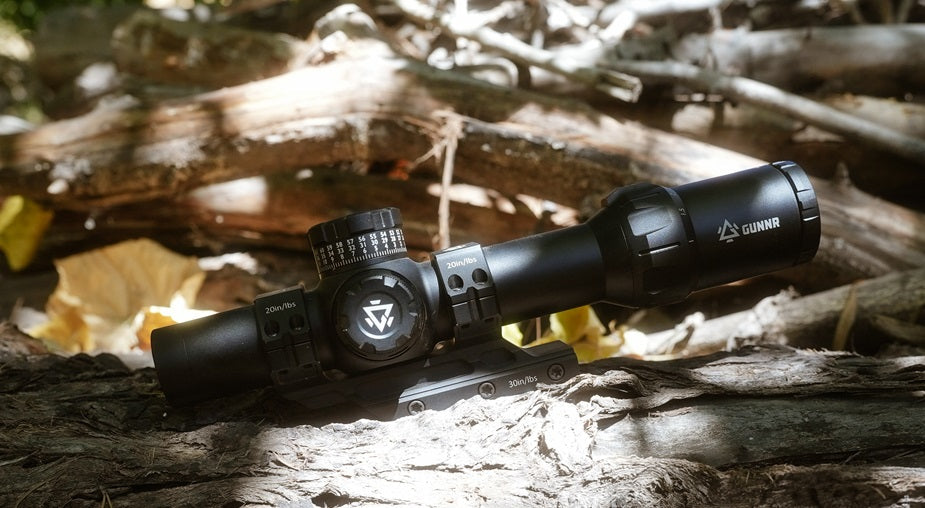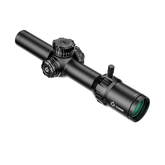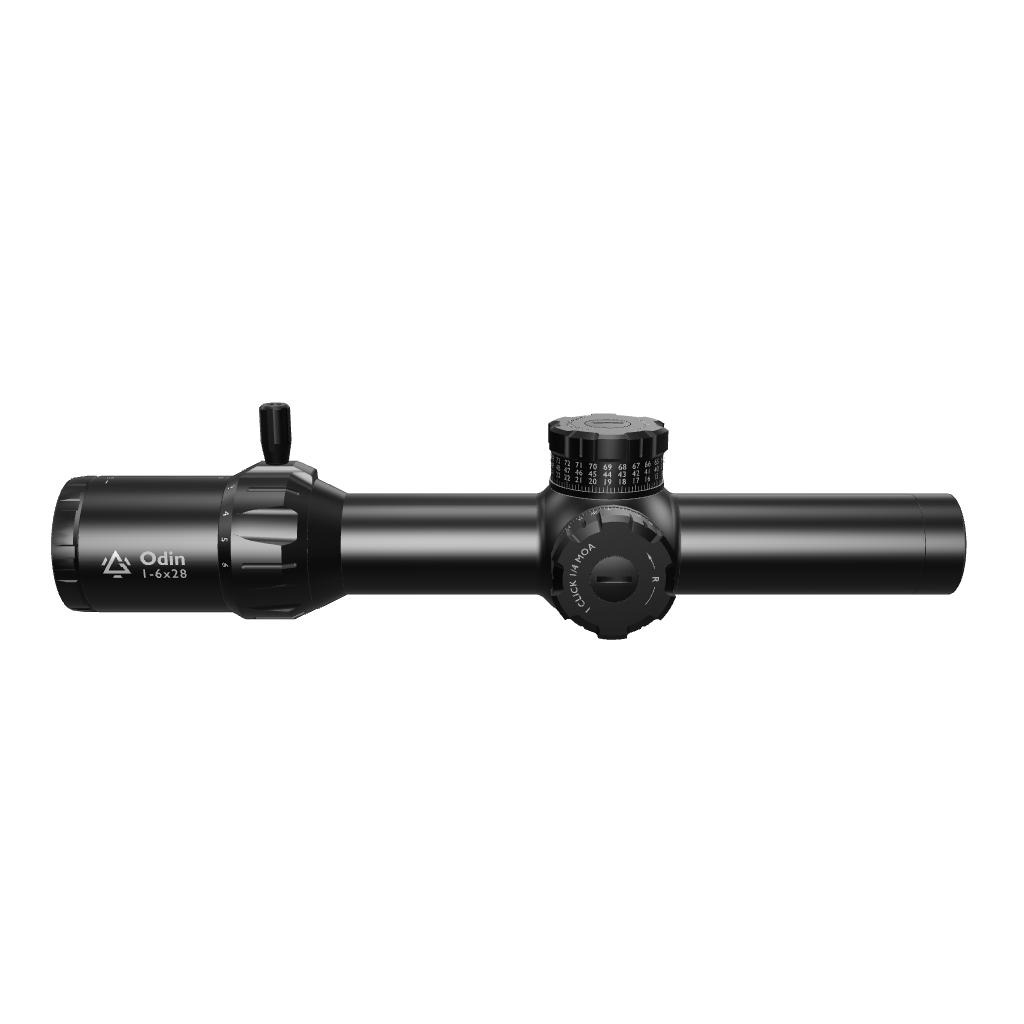8 REASONS YOUR LPVO KEEPS LOSING FOCUS
If your LPVO loses focus once in an isolated incident, that would not be much of a problem. The problem is when it keeps happening over and over again. When it becomes clear that something is wrong, the best thing to do would be to find and fix the problem from the root. However, you sometimes cannot tell where the problem is coming from. There could be a number of problems that cause your scope to lose focus. It could be the scope’s settings, improper mounting, or internal mechanisms.
This blog will discuss eight probable reasons your LPVO keeps losing focus and what you can do in each case both to solve the issue and to prevent it from happening again.
1. It is not Properly Mounted
There is a good reason why learning how to mount your LPVO should be one of the first skills you master as a shooter. A properly mounted scope is secure, firm, fixed, and capable of handling the recoil from each shot. If your scope isn’t securely mounted to the rifle, the recoil will cause the LPVO to shift every time you fire. Eventually, your lens will lose focus.
What to Do
- To prevent recoil from causing your scope to shift, master the process of mounting your LPVO. Ensure the scope rings and base are tightly secured.
- Also, the quality of the mount you use matters. Using high-quality mounts can help prevent shifting during recoil. Many shooters choose cantilever mounts like this Sleipnir mount from Gogunnr. It has an integrated dual-ring design that guarantees a secure hold on your scope and an easy-to-mount system that most shooters find to be really convenient.
2. Your Eye Relife is Inconsistent
Sometimes the reason your scope keeps losing focus has to do with eye relief. First, you must know what amount of eye relief is appropriate for your scope. In doubt, check the product manual for the recommended eye relief distance from the manufacturer.
The distance from your eye to the scope’s lens must remain fixed as you shoot. If, for some reason, your head keeps moving or that distance starts to vary between shots, the scope may appear to lose focus.
So, what could cause your eye relief to vary?
- Sometimes it's improper cheek weld. Ensure your cheek is consistently placed on the rifle’s stock. That way, your eye remains in the same position every time you take a shot.
- It may also be problems with your shooting position. Whether shooting from a prone, sitting, or standing position, you must ease yourself into a stable and consistent shooting stance that allows you to control recoil and maintain sight alignment.
What to Do
Check your cheek weld, maintain a consistent shooting position, and ensure your eye relief is stable to avoid issues with focus.
3. Parallax Issues
Most LPVOs have fixed parallax settings, which means there is no parallax adjustment knob. In fact, where there is no dedicated feature for parallax adjustment, it is often safe to assume that the scope has a fixed parallax setting, which is true for LPVOs.
The good thing about fixed parallax is that it works impeccably if you shoot short- to mid-range. However, when you increase magnification for long-range shots, fixed parallax can be problematic on some LPVOs. Without proper parallax adjustment, the reticle and target may not stay in the same focal plane.
Take an Example
The first two LPVO models in Gunnr's ODIN series are the Odin 1-6×28 FFP and the ODIN 1-8×24 FFP, which allow maximum magnification of 6x and 8x, respectively. With these two models, the fixed parallax settings should suffice to eliminate any parallax error.
The third model, however, is the ODIN 1-10×28, which goes up to 10x magnification. At such increased levels of magnification, fixed parallax might not be so effective when shooting over an extended range. Even a slight error in parallax can cause a shot to miss by inches or more.
How to Fix Parallax
So, how do you handle a scope like the ODIN 1-10×28, which has such high magnification?
- Ensure you are within the effective range of your LPVO’s parallax settings.
- It is also important to check how your scope deals with parallax. Some LPVOs may not have a dedicated parallax adjustment knob, but they provide other features to help handle parallax adjustments.
Gogunnr’s Odin LPVO scopes, for example, come with an adjustable rear lens to help deal with parallax issues. This lens is specially designed to be adjustable, and this feature is crucial when it comes to eliminating parallax. With this feature, eliminating parallax on an Odin scope is quite easy.
Here are some simple steps to follow:
- Look through the scope and aim at your target.
- Shift your head slightly up, down, and side to side without moving the rifle.
- If the reticle appears to move relative to the target, parallax is present.
- Move the rear lens slightly and realign until the target and the reticle are on the same focal plane. You’ll know parallax is corrected when the reticle stays perfectly still, even as you move your head.
4. The Diopter Settings are not Well Adjusted
Your focus may be off because the diopter settings are not properly adjusted. The diopter adjustment is located near the eyepiece, and it allows you to fine-tune the focus of the reticle for your eyesight. If the diopter setting is incorrect, the reticle or image may lose focus.
How to Fix This
You must learn how to adjust and your diopter settings until the reticle appears sharp for your eye.
Once you find the correct setting, make sure the diopter is properly locked in place to prevent it from moving again.
5. Your Lens is Dirty
Sometimes, your rifle scope is not actually out of focus: it only seems so because the lens is dirty. The lenses are undoubtedly the most fragile and delicate components of any rifle scope, and you always want to take extra measures to keep them sparkling clean.
Dirt, debris, or fingerprints on the lenses can reduce the lifespan of the lenses themselves but also affect the image clarity and cause it to seem out of focus.
Solution:
- Try as much as possible to limit how much your lenses get exposed to environmental factors like wind, or dust which can cause dirt to settle on them.
- Use lens protectors and covers to secure the lenses whenever you store your scope.
- Always clean your lens. Use a microfiber cloth and/or any other lens cleaner specifically designed for optics. Harsh materials could scratch the lenses.
6. There is Internal Damage or Faulty Components
Of all causes that could cause your lens to lose focus, internal damage or faulty components is the most difficult to deal with. This would usually mean that scope’s internal components are damaged (e.g., from a hard drop or poor manufacturing). Internal lens shifts, reticle movement, or damaged adjustments could also be to blame.
Dealing with Faulty or Damaged Internal Components
- In this case, there is hardly anything you can do except if you have the right training.
- Check for signs of damage. Shake the scope and listen for any rattling sounds.
- If you suspect internal damage, the scope may need repair or replacement.
7. There is Moisture in the Scope
Extreme temperature fluctuations or high humidity levels present a problem to rifle scopes that many shooters hardly see coming. When temperatures change quickly and dramatically, condensation happens inside the scope, and this can lead to blurred or fogged-up lenses.
While most shooters know to protect their scopes from moisture infiltration, the possibility that water might actually be formed inside the scope may not be so apparent until it is too late.
Dealing with Moisture in your scope
Use scopes that are nitrogen or argon purged and properly sealed.
If moisture is trapped inside, the scope may need professional servicing.
8. Magnification Setting Issues
When using an LPVO, you must ensure that magnification levels are well-calibrated across the entire zoom range. LPVOs generally offer a broad range of magnification, and if your magnification settings are improper, they may lose focus at different magnification levels. This usually happens because the internal lenses or mechanisms do not align properly as you change magnification.
Handling Magnification Settings
- Ensure you have a quality scope that holds focus throughout the magnification range.
- If your LPVO continues to lose focus at different zoom levels, consider having it checked or replaced.
With these eight tips, you are fully equipped to handle persistent focus issues. Remember to try to identify the primary cause of the issue first before applying any of the above corrective measures. These measures should suffice, but if you are further in doubt, please refer to the product manual or contact the manufacturer.
For more tips and vital information on handling prominent issues with your LPVO, check out more blogs from Gogunnr. Also, take a closer look at our newly launched line of Odin Scopes, which are all the buzz right now!







